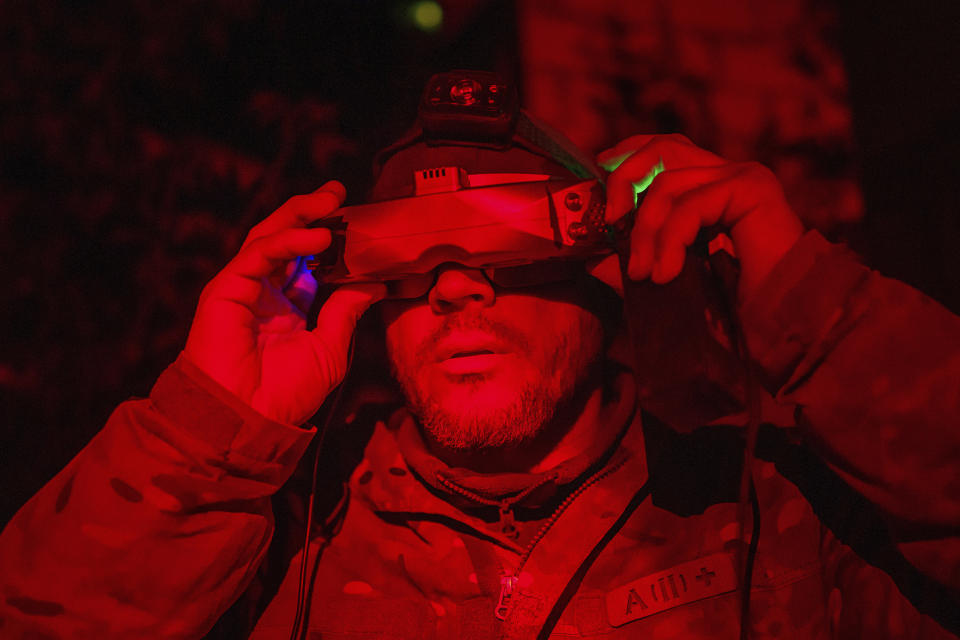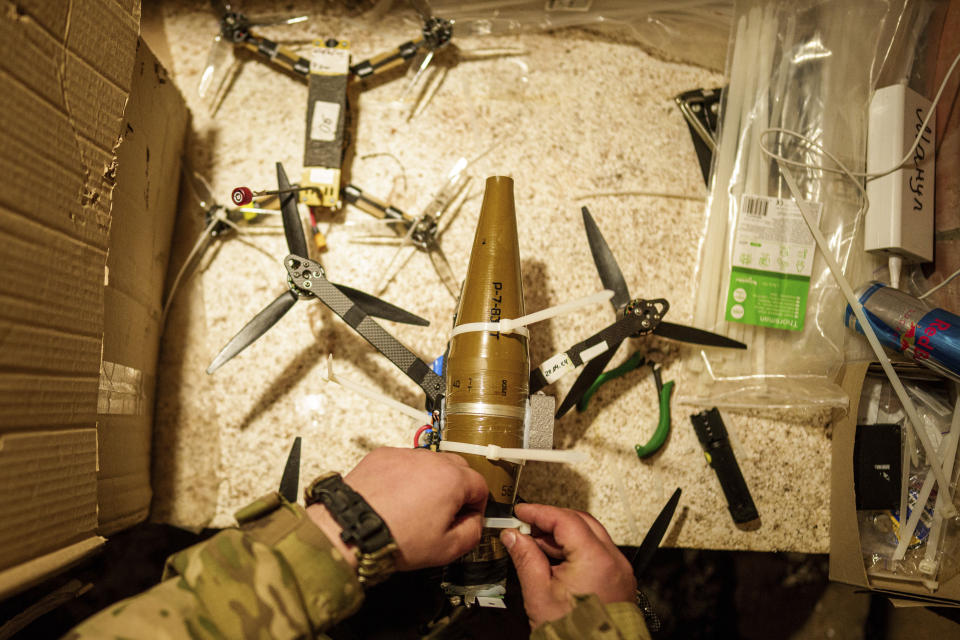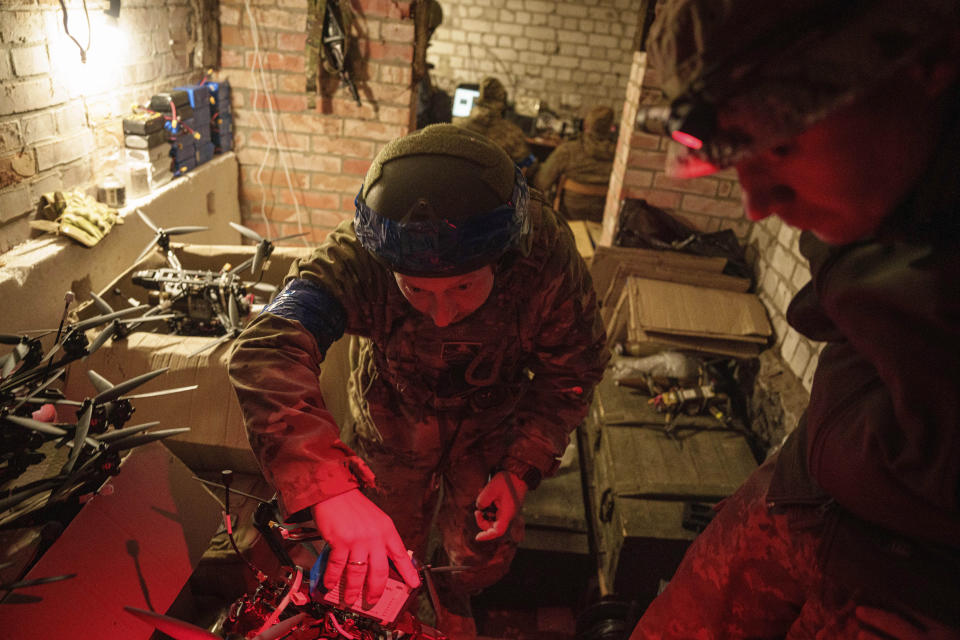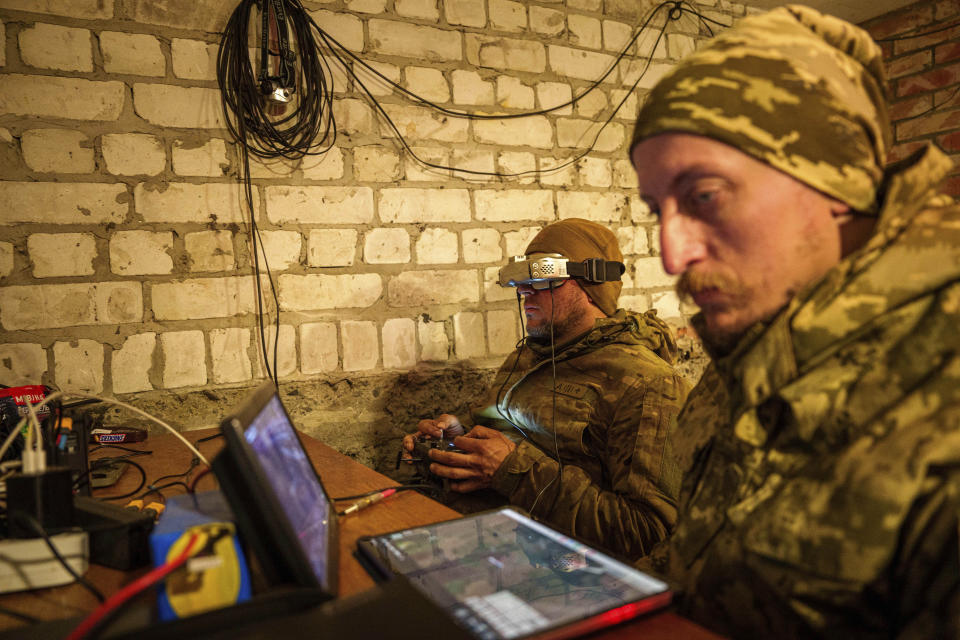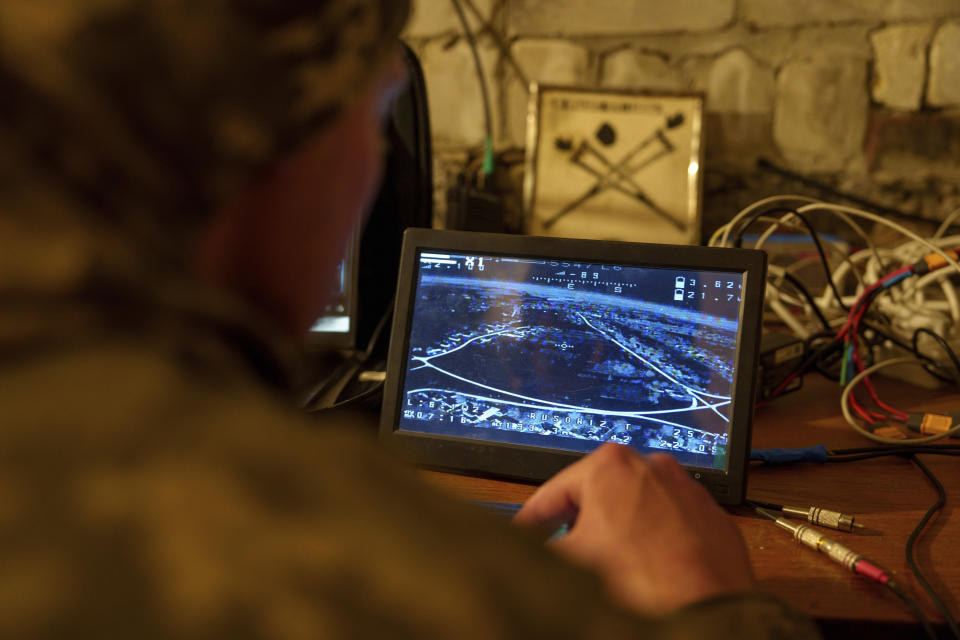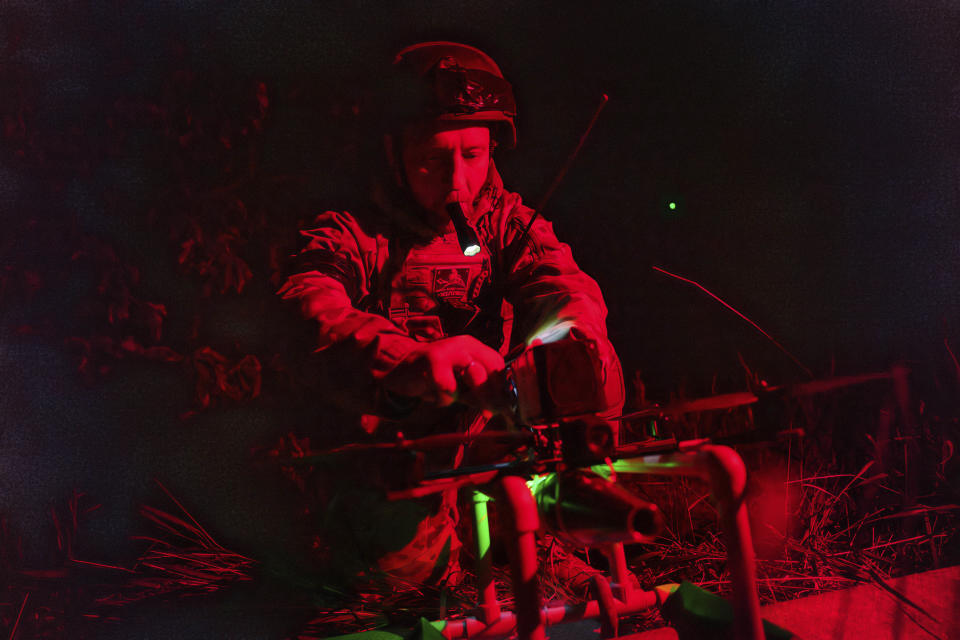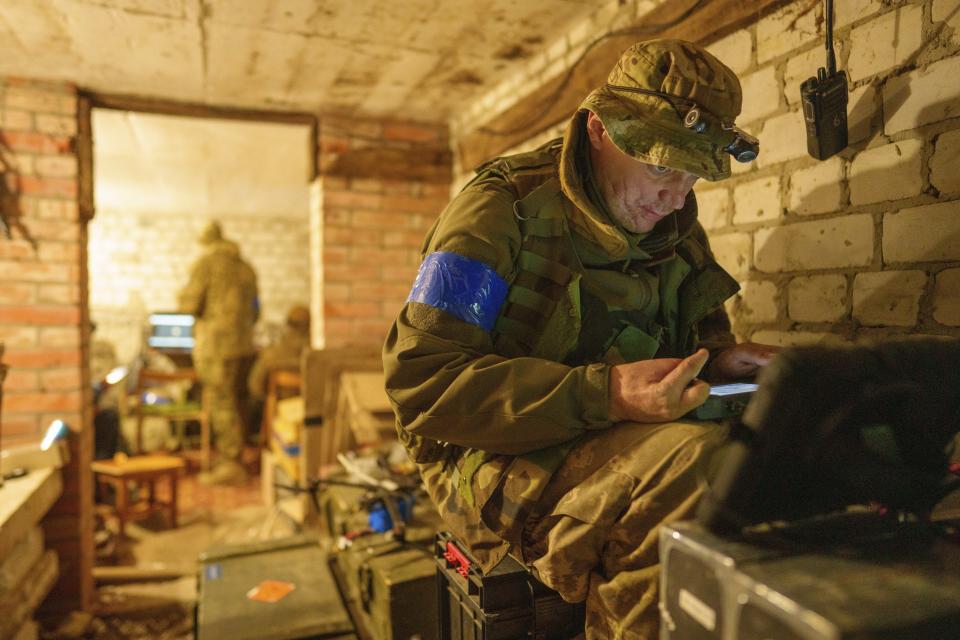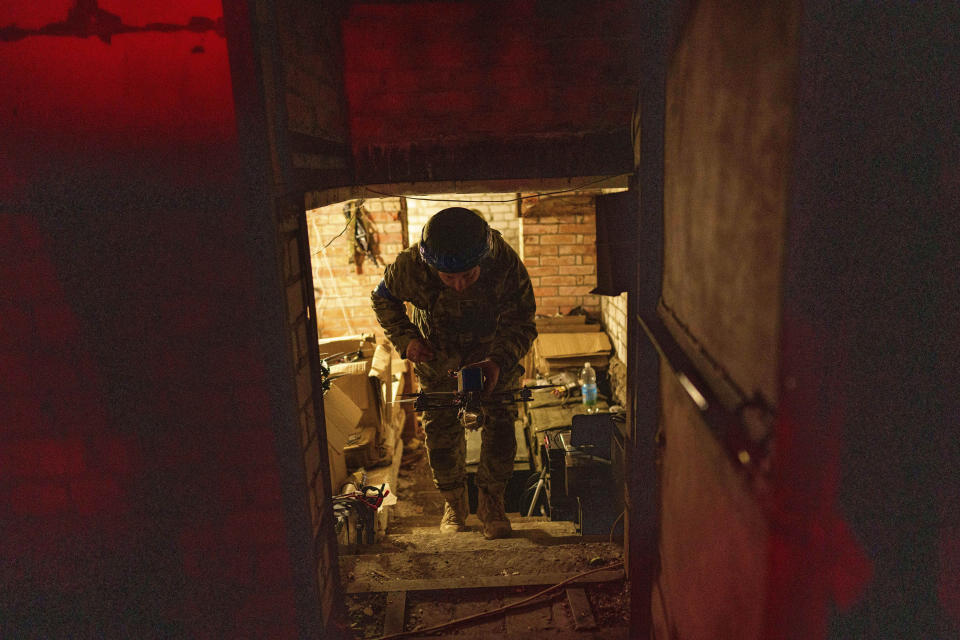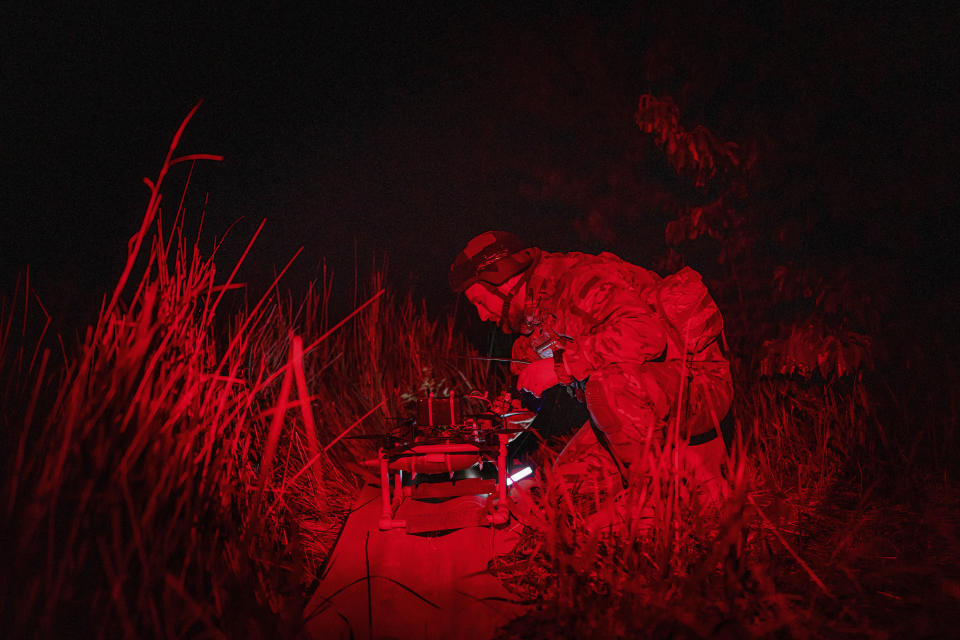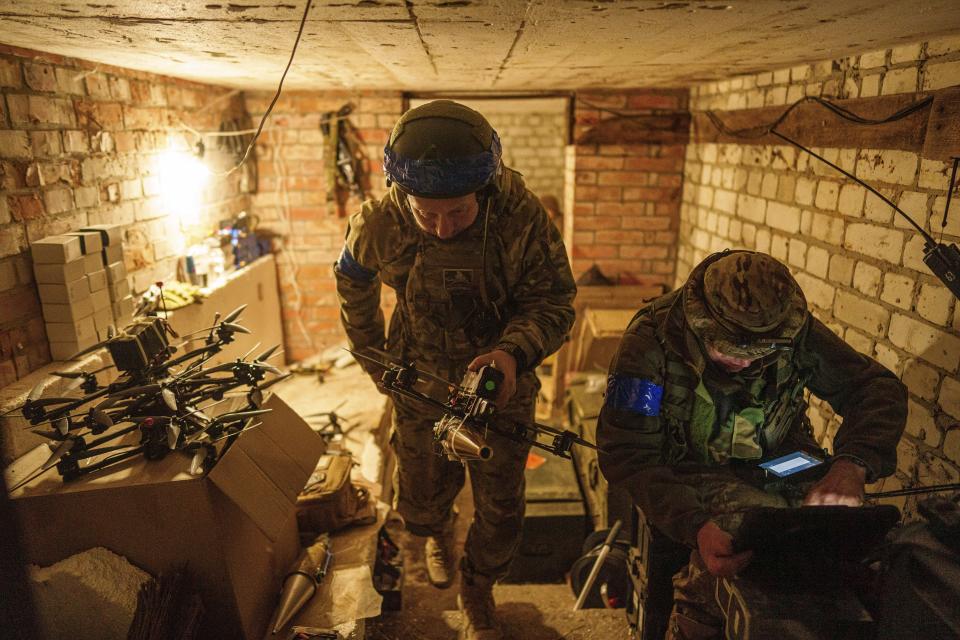AP gets rare look as Ukraine tries to slow Russia with drones on new front
KHARKIV REGION, Ukraine (AP) — From the sky, the Ukrainian drone unit commander had a bird’s-eye view of Russia’s renewed offensive playing out in the country’s war-ravaged northeast.
Enemy forces have captured a string of Ukrainian villages over the past few days after opening a new front along the border with the Russian region of Belgorod. In the village of Strilecha, long depopulated due to its proximity to the border, a Russian infantry unit rolled in with ease, said one drone operator.
“I saw that the infantry just walked into the village,” said Borchik. “There were a lot of them.” Members of the unit spoke on the condition that only their call signs be used in line with Ukrainian military protocols.
In many other places this week, Russian troops were locked in intense battles with Ukrainian soldiers.
Russia's ground offensive has opened a new front and put more pressure on Ukraine's overstretched forces, who are using bomb-laden drones to destroy military vehicles. The Associated Press had access to a position on the overstretched front lines with Ukrainian drone operators, and watched as a serviceman destroyed a Russian vehicle from afar with a remote-controlled aircraft.
Despite such blows against Russia, Ukraine is entering a two-month period expected to be its most difficult since the war began.
“This is just the beginning,” said Manul, the call sign of the Ukrainian drone operator. The AP team was allowed to spend time with the drone unit on condition that the exact location not be revealed.
A RARE LOOK
Analysts paint a bleak picture. By stretching Ukrainian forces thin ahead of an expected summer offensive, Russia increases the chances of a breakthrough even if Western supplies are delivered in full.
Precious reserves were meant to halt Russia’s advance elsewhere along the 1,000-kilometer (620-mile) frontline but rotated out to stabilize the new front and limit Moscow’s advance. Now Ukrainian soldiers are concerned Russia will open more fighting along its border with Ukraine to stretch limited manpower and exploit the window of time before promised Western military aid arrives.
Meanwhile, Manul's unit keeps watch around the clock of a highway in the Kharkiv region and dispatches drones to destroy military vehicles that are meant to bolster the Russian advance along the border.
The push against Kharkiv compels Ukraine to commit troops to defend its second-largest city, “and given the size of the Russian group of forces in the area, this will draw in reserves of critical material, from air defences to artillery,” wrote Jack Watling, RUSI’s Senior Research Fellow for Land Warfare.
THE FRONT LINE
Russia can then apply pressure in other areas of the front line, including the mostly static southern front in the Zaporizhzhia region. After Ukraine commits reserves in these directions, Russia can push in further toward Donetsk and Luhansk, Watling wrote.
The capture of Donestsk and Luhansk is Moscow’s stated aim. Russia’s operation, which has seen village after village fall to Moscow’s control, is the most significant border incursion since the full-scale invasion. Russian troops have faced little resistance.
“Today I saw that the (Russian) infantry just walked into the village,” said Borchik, the drone operator of the ACHILLES battalion of the 92nd brigade.
Signs of an impending offensive were clear, Ukrainian soldiers said. A large accumulation of Russian troops, including newly formed groups, by the border signaled a fresh attack was imminent.
At the same time, improved Russian intelligence gathering managed to exploit another enduring Ukrainian disadvantage: The shortage in personnel.
SHORTAGE OF PERSONNEL
When it came time to launch the offensive, Moscow knew Ukrainian forces would be spread desperately thin and have to rotate in units fighting heavy battles in the Donetsk and Luhansk regions, known as the Donbas.
“We lack the infantry. Not many people mobilize,” Borchik said. “We are running out of people and crews need to be replenished.”
“Plus, the Russians have information. I don’t know how, but it's being leaked when one brigade leaves and a new one enters. And in that moment the Russians storm in,” he said.
That was how Russian forces captured the Donetsk settlement of Ocheretyne last month. Moscow’s troops capitalized on the moment between one brigade’s departure and another’s entry, when the line is at its weakest.
With 50,000-70,000 troops amassed in the Belgorod direction, nowhere near enough to seize Kharkiv region, it is clear to Ukrainian commanders that the operation seeks to divert their forces from other parts of the frontline.
“It will significantly complicate things,” he said.
The night they arrived, the unit destroyed many light military vehicles and trucks moving along the highway. The following night, there were fewer, a sign the Russians wised up about the presence of a drone unit within firing range.
“We burned their equipment, so they are driving less now. Maybe they found another path,” he said.
ANOTHER PATH
Borchik is now waiting to see what countermeasures the Russians will deploy to evade their drones.
Moscow has gained the upper hand by using electronic warfare to neutralize Ukrainian craft.
“I think they will use radio-electronic warfare here … so that we fly less,” he said. “And they will look for ways to further drag out more reserves.”
Russian troops are deploying new frequencies to evade Ukrainian jammers, while finding other ways to muffle Ukrainian drone frequencies. Recently, Russian troops unveiled tanks equipped with a shell-like contraption, ostensibly to protect it from marauding suicide drones.
“Destroying such equipment is much more difficult,” said Borchik.
___
Associated Press journalist Volodymyr Yurchuk contributed to this report.
___
For more coverage of the war in Ukraine, visit: https://apnews.com/hub/russia-ukraine
